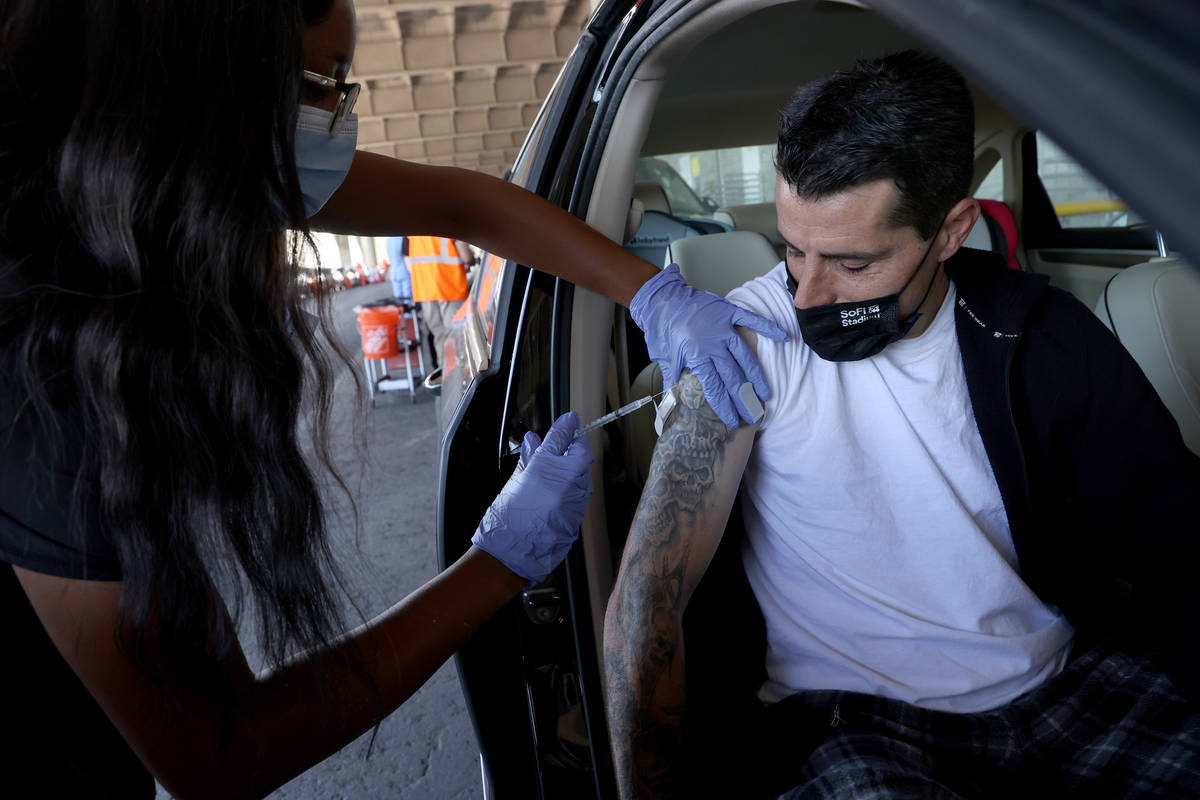Hospitalizations for COVID-19 in Nevada at peak levels of last summer
Nevada on Tuesday reported a sharp increase in COVID-19 related hospitalizations, with the most recent figure just below the peak of the second wave of coronavirus infections last summer.
Updated data from the Department of Health and Human Services posted on the state’s coronavirus website showed 1,143 people hospitalized with confirmed or suspected cases of COVID-19, a jump of 97 from Monday’s report.
That’s just four less than the 1,147 hospitalizations that marked the peak of the second wave in late July and early August last year, according to the Nevada Hospital Association. That figure was later dwarfed by the high point of the third wave in the winter, which saw a high of 2,126 COVID-related hospitalizations on Dec. 22.
But the latest spike represents a fivefold increase in hospitalizations since mid-June, when the numbers stabilized in the low 200 range before beginning to climb again.
Other key COVID-19 metrics also continued their recent ascents in Tuesday’s report, with the state reporting 1,124 new cases and 17 deaths over the preceding day. That was the highest number of new cases reported in a single day since Feb. 8.
The state’s totals increased to 352,567 cases and 5,854 deaths.
Data guide: COVID-19’s impact on Nevada
New cases were well above the two-week moving average, which increased from 778 per day on Monday to 792.
The two-week moving average of daily deaths, meanwhile, increased from five to six. That number had dropped to a recent low of two per day on May 31, but has slowly risen since then.
State data showed that Nevada’s two-week positivity rate, which essentially tracks the percentage of people tested for COVID-19 who are found to be infected, rose another 0.2 percentage points to 13.7 percent.
State and county health agencies often redistribute the daily data after it is reported to better reflect the date of death or onset of symptoms, which is why the moving-average trend lines frequently differ from daily reports and are considered better indicators of the direction of the outbreak.
Public health officials have said that the presence in the state of the so-called delta variant, a more contagious form of the coronavirus, has been largely driving the growth in new cases and hospitalizations, with unvaccinated residents accounting for nearly all of the new infections. Most of that growth has occurred in Southern Nevada.
Public health officials have been emphasizing the need for more Nevadans to get vaccinated to stem the rising COVID tide. The effectiveness of those appeals and inducements like a $5 million state raffle and pop-up clinics offering big prizes remains unclear, but Nevada, which is well below the national average in vaccinations, has seen an uptick in doses administered over nearly two weeks. In Tuesday’s report, the state reported it administered 5,463 doses over the preceding day, more than 700 more than the recent low point of 4,729 doses on July 15.
The state also has been conducting more coronavirus tests of late. The two-week moving average stood at 6,239 on Tuesday, an increase of nearly 1,900 from the middle of June.
State figures released late Monday show that the variant, first detected in India, was responsible for 81 percent of cases in the last week. In Clark County, the delta variant accounted for 84 percent of samples collected in July and genetically sequenced, a significant increase from the 59 percent reported in June.
Meanwhile, the Southern Nevada Health District reported 951 new COVID-19 cases in Clark County, bringing the local case total to 276,934. The county also reported all 17 of the state’s deaths, bringing the total to 4,653.
The county’s 14-day positivity rate also continued to climb, increasing to 14.9 percent.
County numbers are reflected in the statewide totals.
Contact Jonah Dylan at jdylan@reviewjournal.com. Follow @TheJonahDylan on Twitter.
Nevada vaccinations
— 12 years+ population: 2.64 million.
— Doses administered: 2.66 million.
— Vaccinations initiated: 1.51 million.
— Vaccinations completed: 1.26 million.
— Eligible fully vaccinated: 47.19 percent.
Sources: Department of Health and Human Services, U.S. Census Bureau

















